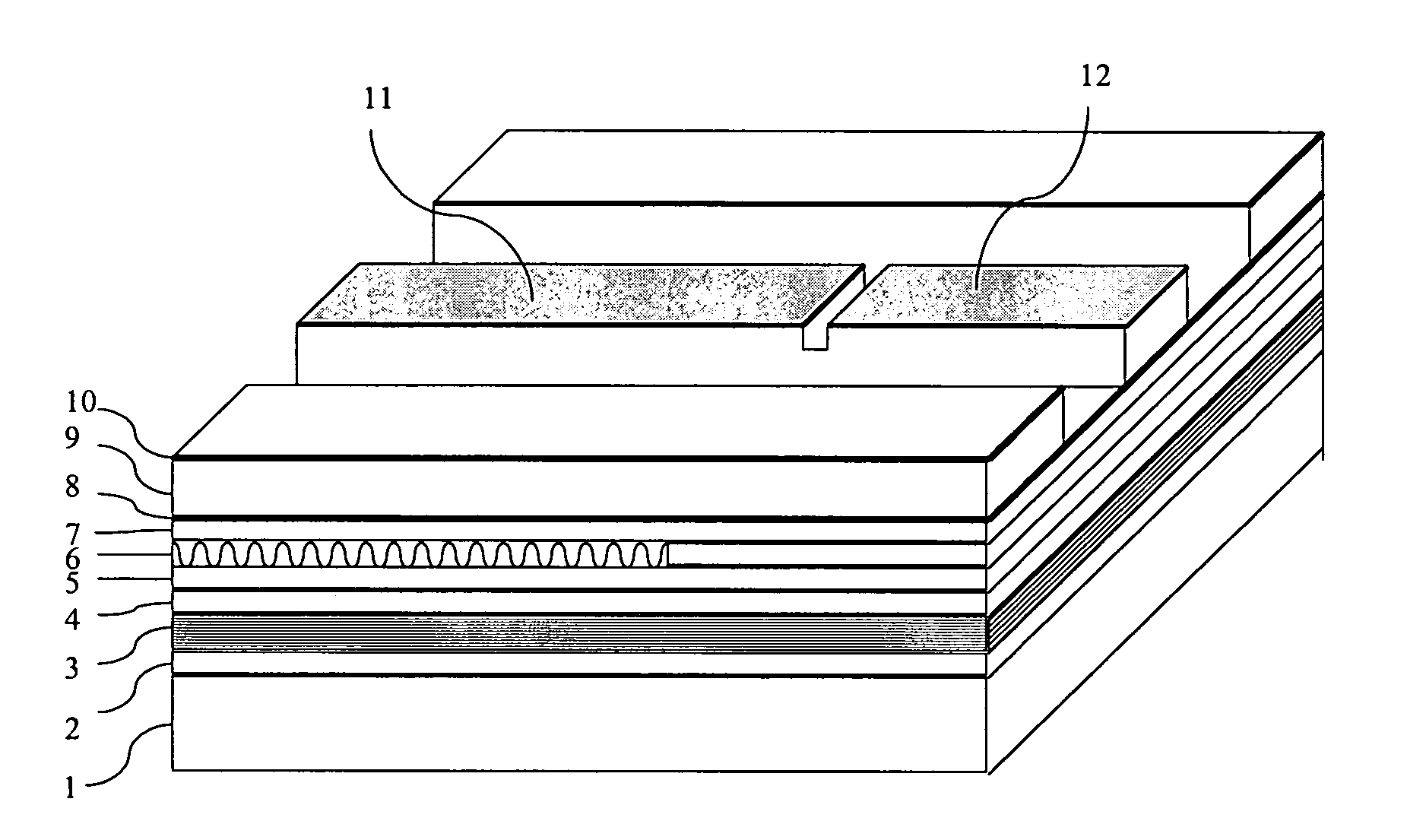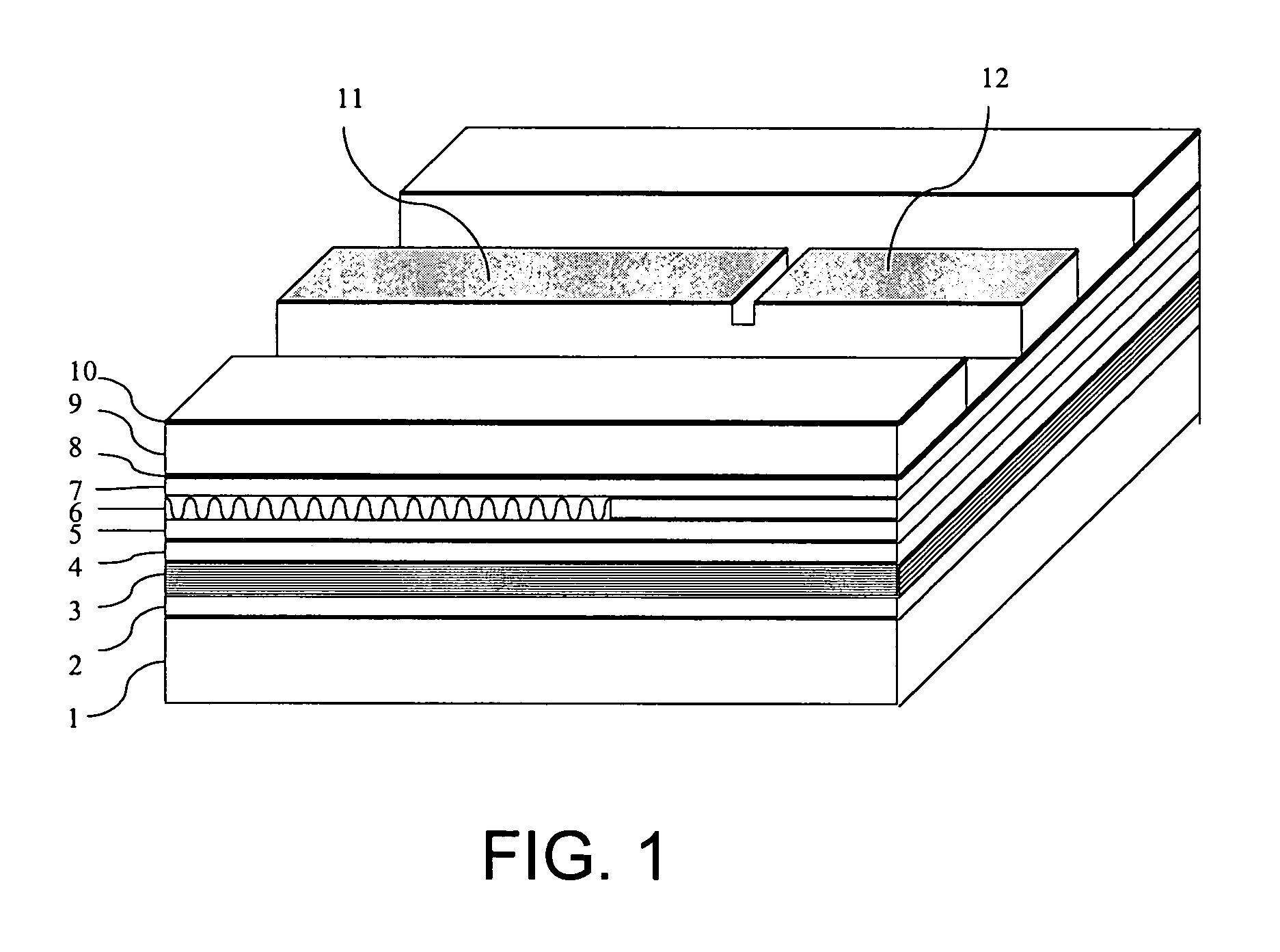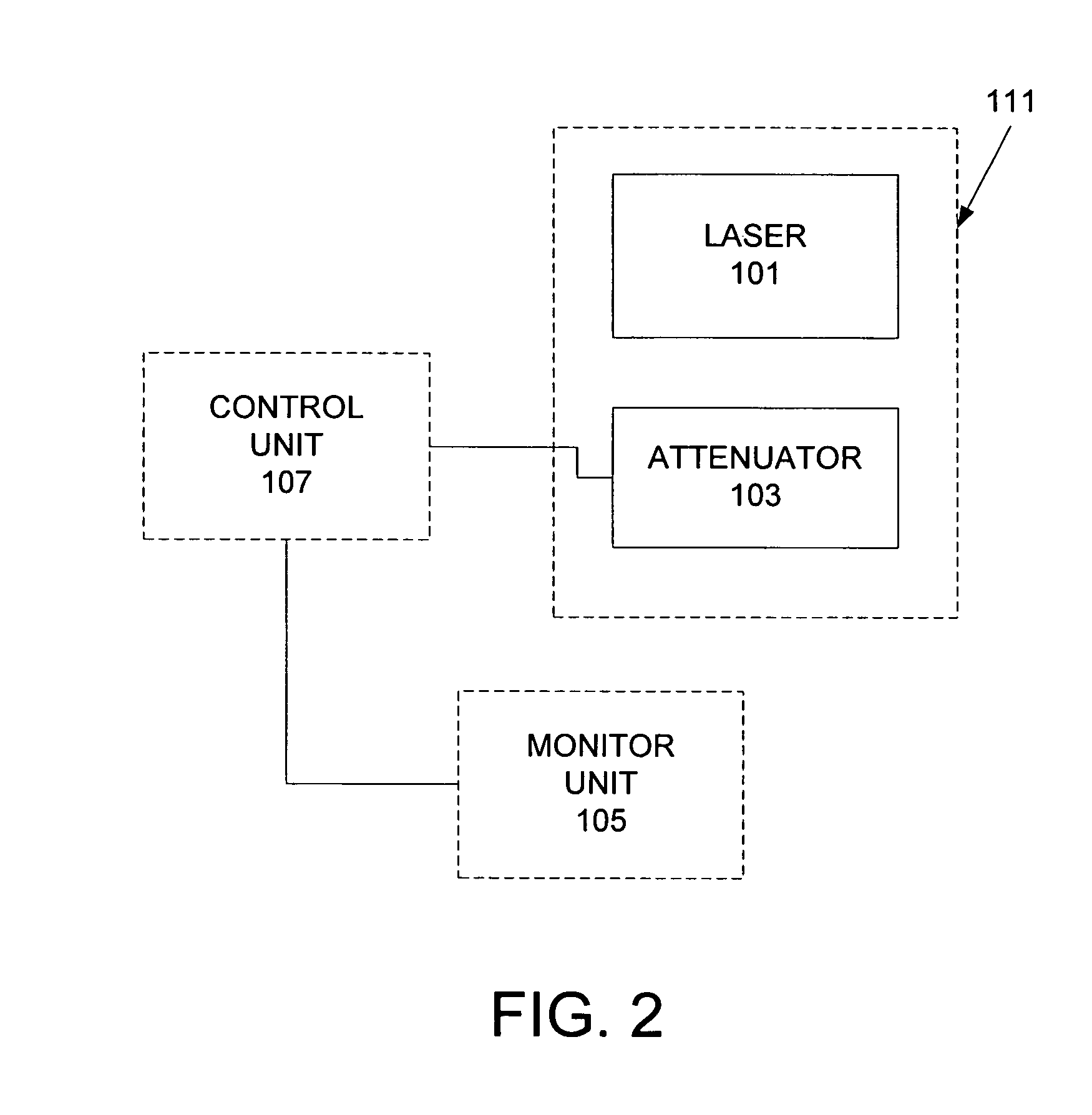Semiconductor distributed feedback (DFB) laser array with integrated attenuator
a distributed feedback and laser array technology, applied in the field of optical devices, can solve the problems of low optical absorption, achieve the effects of improving device operation, reducing power exiting the device, and increasing curren
- Summary
- Abstract
- Description
- Claims
- Application Information
AI Technical Summary
Benefits of technology
Problems solved by technology
Method used
Image
Examples
Embodiment Construction
[0030]In one embodiment, a DFB laser containing gain material and a grating for feedback is integrated with a semiconductor attenuator region with an active material but no grating layer. The light from the DFB laser passes through the attenuator region. The attenuator region acts to absorb light and generates a photocurrent. If a contact to the attenuator is left open, the optical energy saturates the gain material, rendering it transparent, and the majority of the light entering from the DFB laser is transmitted out of the attenuator region. On the other hand, if the generated photocurrent is allowed to flow out of the attenuator region, the photo-generated carriers do not build up and the material continues to absorb light. Thus by adjusting the bias conditions to the attenuator region, the light intensity exiting the device can be controlled. In some embodiments, an array of lasers and attenuators is fabricated, where each laser is individually contacted, but all the attenuators...
PUM
 Login to View More
Login to View More Abstract
Description
Claims
Application Information
 Login to View More
Login to View More - R&D
- Intellectual Property
- Life Sciences
- Materials
- Tech Scout
- Unparalleled Data Quality
- Higher Quality Content
- 60% Fewer Hallucinations
Browse by: Latest US Patents, China's latest patents, Technical Efficacy Thesaurus, Application Domain, Technology Topic, Popular Technical Reports.
© 2025 PatSnap. All rights reserved.Legal|Privacy policy|Modern Slavery Act Transparency Statement|Sitemap|About US| Contact US: help@patsnap.com



